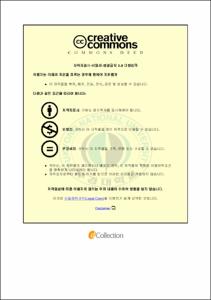한국어 교재에 제시된 관형형 어미 연구
- Alternative Title
- A STUDY ON ENDINGS OF MODIFIER FORMS IN KOREAN TEXTBOOKS
- Abstract
- This study is for an analysis of endings of modifier forms in korean
textbooks and for studying the efficient way of teaching adnominal
endings. Endings of modifier forms function as determine with adding
to a stem of a predicate such as ‘-ㄴ/은’, ‘-는’, ‘-ㄹ/을’, ‘-던’.
Endings of modifier forms function modifying nouns and they are
added to stems of a predicate and differ depended on the part of
speech. It has various meanings for tense, forms and the mood.
Endings of modifier forms are difficult for foreign students to
understand because of the complexation.
The study for analysing korean text books is needed in order to
teach endings of modifier forms well. I analysed korean text books, 6
kinds and 17 books that universities made. I analysed clauses,
representative forms, order, steps, terms, theme, functions about endings
of modifier forms as well. I tried to show forms, meanings, example,
exercise, applications of endings of modifier forms.
I studied the good way of teaching adnominal endings based on analysis of korean text books. I showed clauses of grammars for
endings of modifier forms that have to teach foreign students and I
studied how to show representative forms. I studied the order, steps
and how to teach terms and explained with English, Japanese, Chinese
about terms for endings of modifier forms. I explained ‘-은³, -은², -는,
-을’ that are used frequently of endings of modifier forms and that are
in beginning levels. I showed how to teach forms, meanings, example,
exercise, applications of endings of modifier forms. I explained English,
Japanese, Chinese in order to make students understand. I gave a lot of
questions in order to make students understand various examples, I
made them balance because endings of modifier forms are used in
situations for speaking and writings.
I balanced irregular verbs and adjectives to make students understand
them and practice in the beginning level. It is meaningful because I
studied korean text books thoroughly and tried to find the efficient way
of teaching endings of modifier forms based on the conclusion of
analysis of korean text books.
*Key words: Korean education, Endings of modifier forms, Analysis of
korean textbooks.
- Issued Date
- 2014
- Awarded Date
- 2014. 8
- Type
- Dissertation
- Publisher
- 부경대학교
- Alternative Author(s)
- SUROK LEE
- Affiliation
- 교육대학원
- Department
- 교육대학원 외국어로서의한국어교육
- Advisor
- 채영희
- Table Of Contents
- Ⅰ. 서 론 ······························································································· 1
1. 연구 목적 ··············································································································1
2. 선행 연구 ··············································································································6
3. 연구 방법 ·············································································································11
Ⅱ. 관형형 어미의 의미와 기능 ·····················································13
1. 형태적 특징 ·········································································································13
2. 통사적 특징 ·········································································································19
Ⅲ. 한국어 교재 분석 ······································································· 30
1. 분석 대상 및 방법 ····························································································30
2.「국제 통용 한국어 교육 표준 모형 개발 ·····················································32
3.「한국어교육 문법·표현 내용 개발 연구(1단계)」······································34
4. 관형형 어미의 제시 분석 ·················································································36
5. 관형형 어미의 항목별 교재 분석 ···································································47
Ⅳ. 관형형 어미의 제시 방안 ························································121
1. 제시 항목과 대표 문형 ····················································································121
2. 제시 순서 ············································································································123
3. 제시 단계 ············································································································125
4. 관형형 어미의 용어 ··························································································127
Ⅴ. 관형형 어미의 교육 방안 ························································130
1. 주제와 기능 ········································································································130
2. ‘-은³’의 교육 방안 ····························································································131
3. ‘-은², -는, -을’의 교육 방안 ·········································································141
Ⅵ. 결 론 ····························································································· 153
*참고문헌 ···················································································································156
- Degree
- Master
- Appears in Collections:
- 교육대학원 > 외국어로서의 한국어교육전공
- Files in This Item:
-
-
Download
 한국어 교재에 제시된 관형형 어미 연구.pdf
기타 데이터 / 4.24 MB / Adobe PDF
한국어 교재에 제시된 관형형 어미 연구.pdf
기타 데이터 / 4.24 MB / Adobe PDF
-
Items in Repository are protected by copyright, with all rights reserved, unless otherwise indicated.